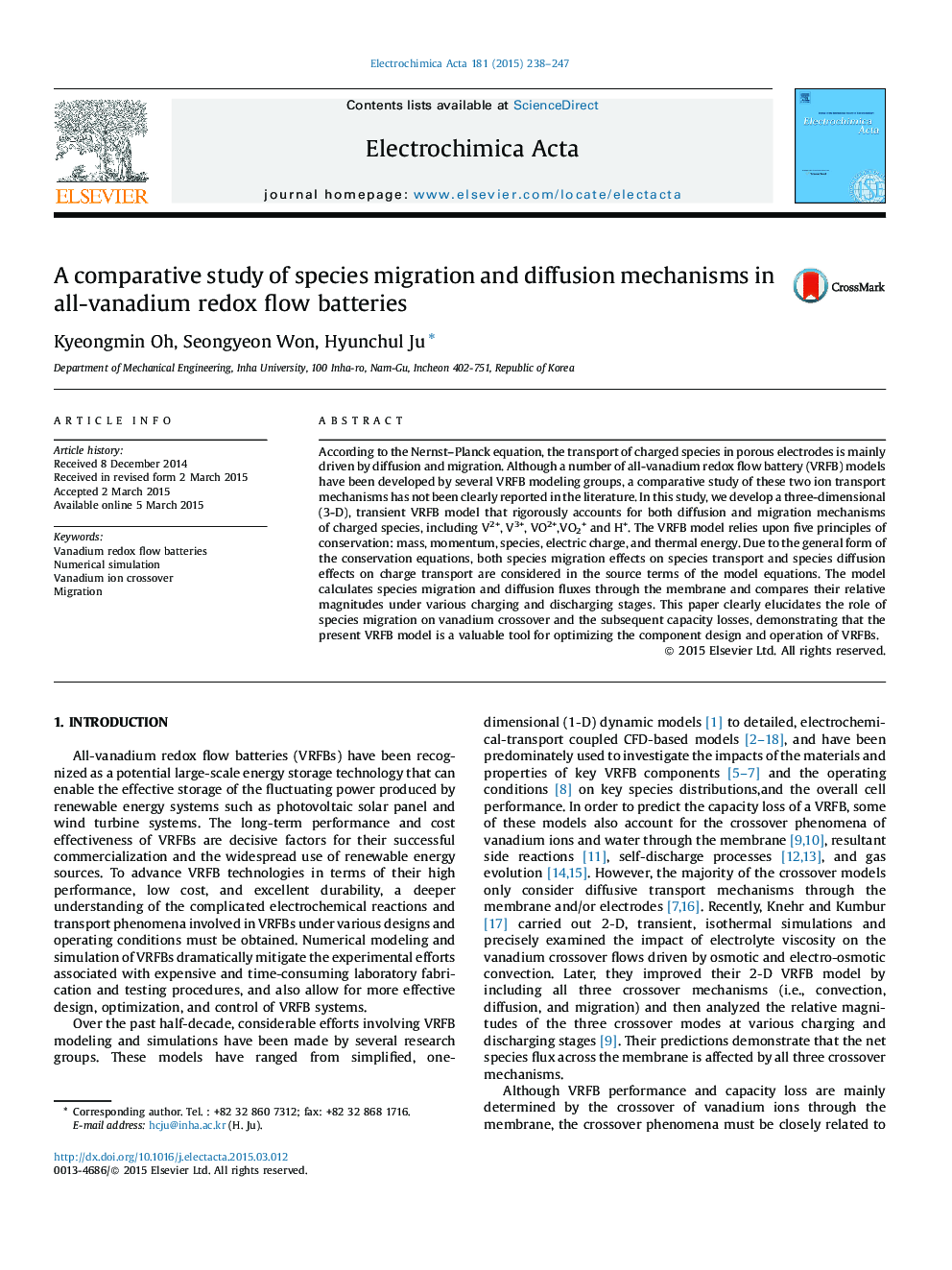| Article ID | Journal | Published Year | Pages | File Type |
|---|---|---|---|---|
| 183493 | Electrochimica Acta | 2015 | 10 Pages |
•Migration effects on crossover phenomena is examined.•Crossover and migration model is newly implemented.•Totally opposite crossover trend is observed with migration during charging.•During discharging, the crossover is enhanced due to migration.
ABSTRACTAccording to the Nernst–Planck equation, the transport of charged species in porous electrodes is mainly driven by diffusion and migration. Although a number of all-vanadium redox flow battery (VRFB) models have been developed by several VRFB modeling groups, a comparative study of these two ion transport mechanisms has not been clearly reported in the literature. In this study, we develop a three-dimensional (3-D), transient VRFB model that rigorously accounts for both diffusion and migration mechanisms of charged species, including V2+, V3+, VO2+,VO2+ and H+. The VRFB model relies upon five principles of conservation: mass, momentum, species, electric charge, and thermal energy. Due to the general form of the conservation equations, both species migration effects on species transport and species diffusion effects on charge transport are considered in the source terms of the model equations. The model calculates species migration and diffusion fluxes through the membrane and compares their relative magnitudes under various charging and discharging stages. This paper clearly elucidates the role of species migration on vanadium crossover and the subsequent capacity losses, demonstrating that the present VRFB model is a valuable tool for optimizing the component design and operation of VRFBs.
